墓園,生命最終的歸處
Cemetery, the ultimate resting place of life.
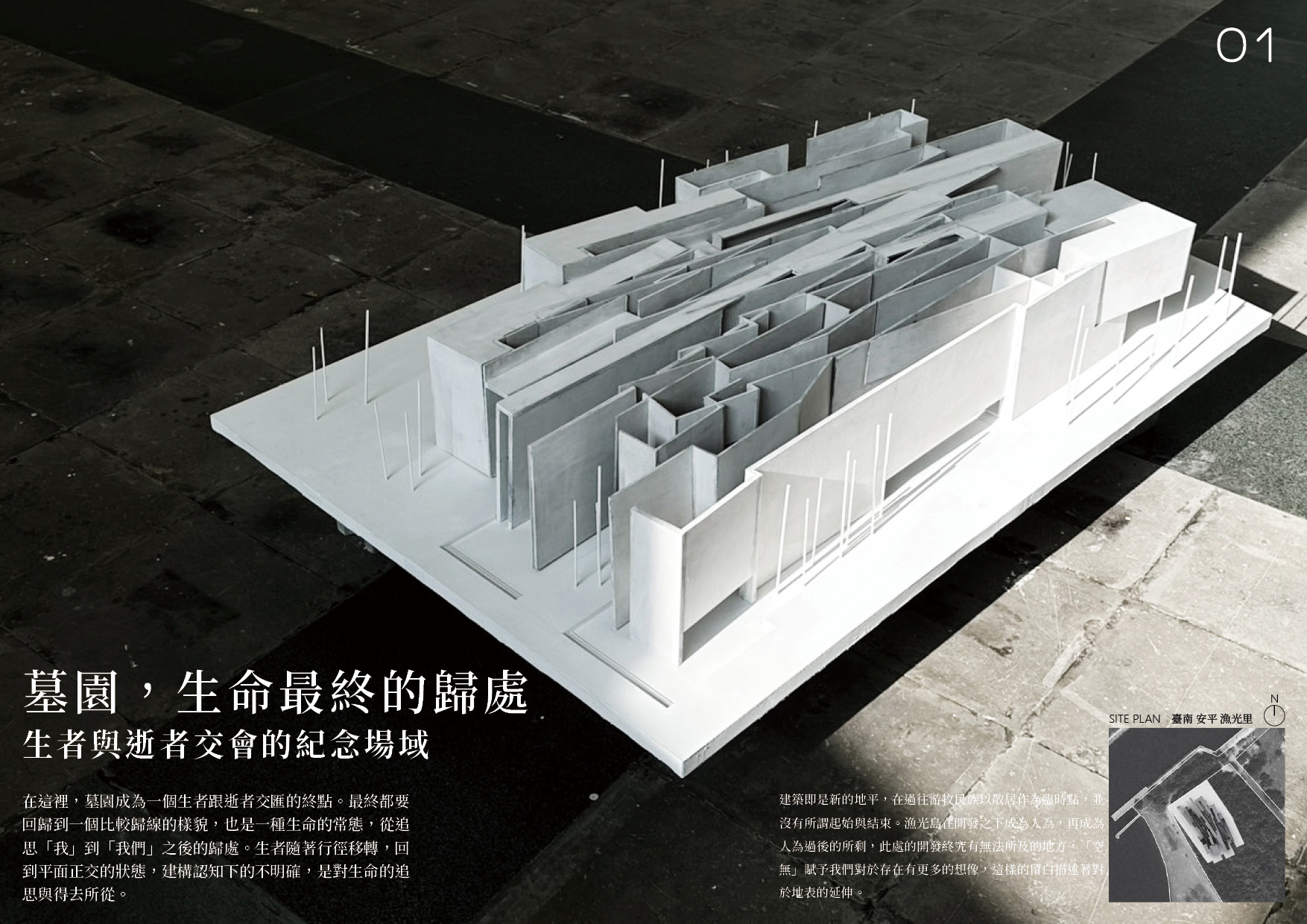
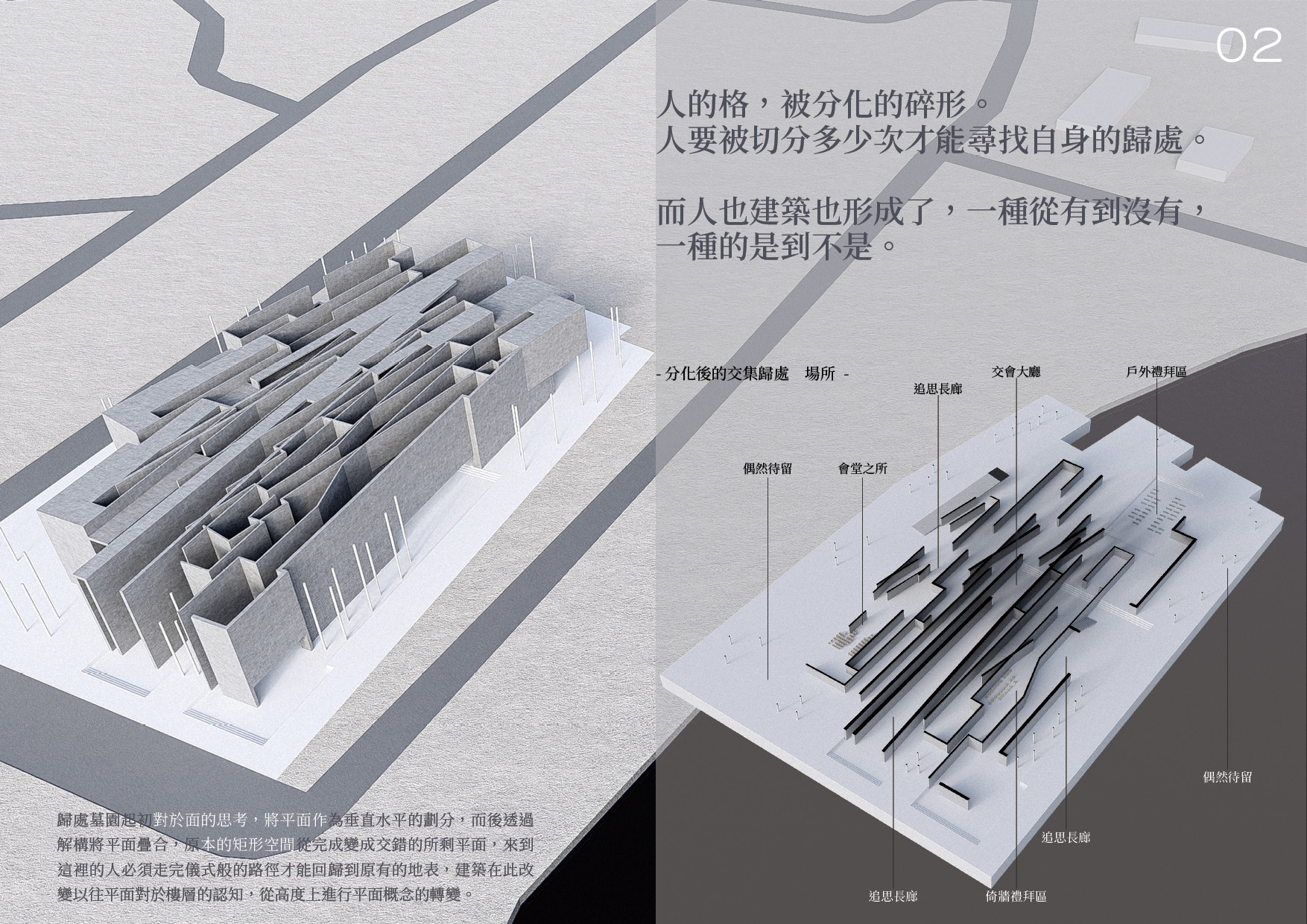
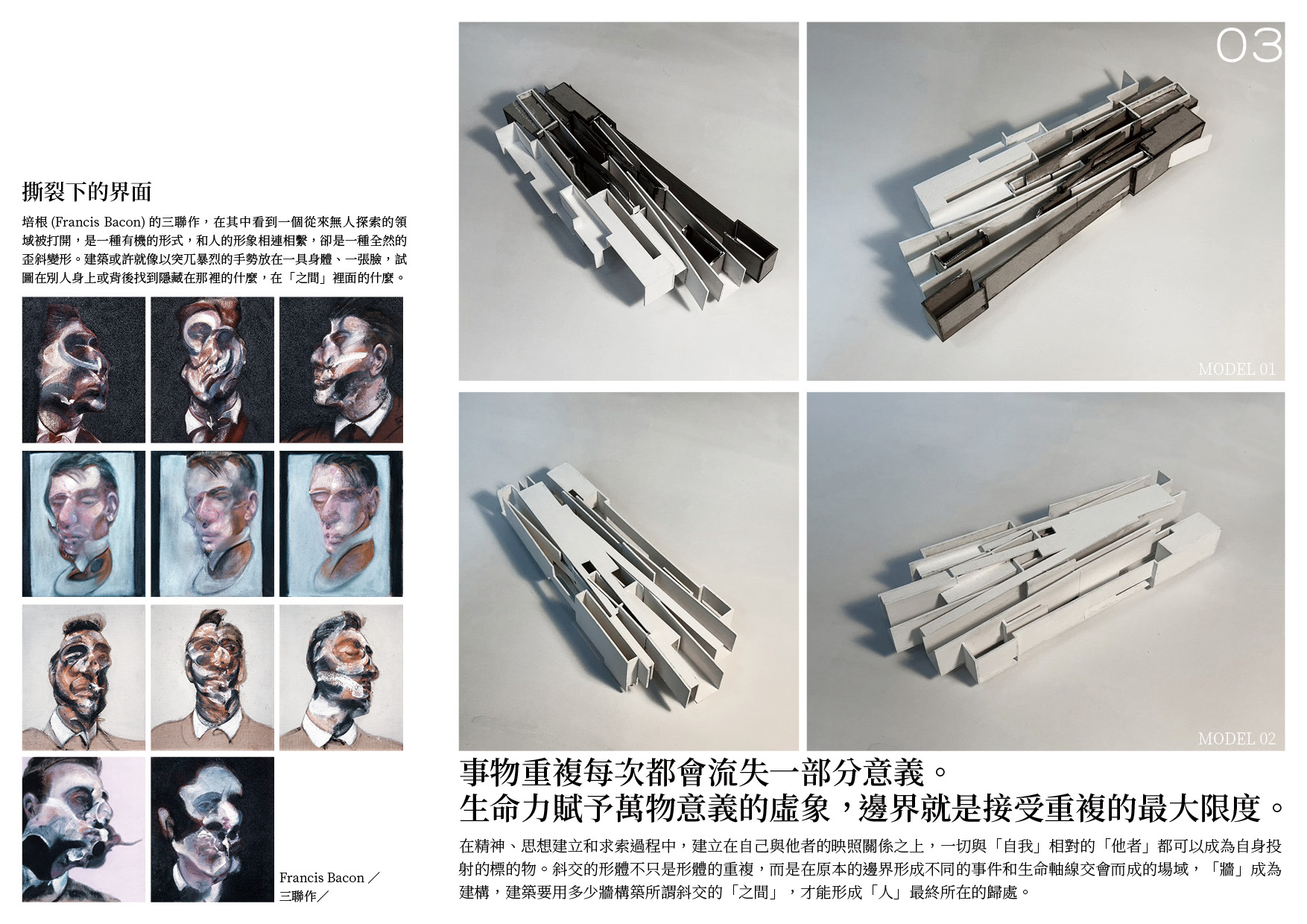
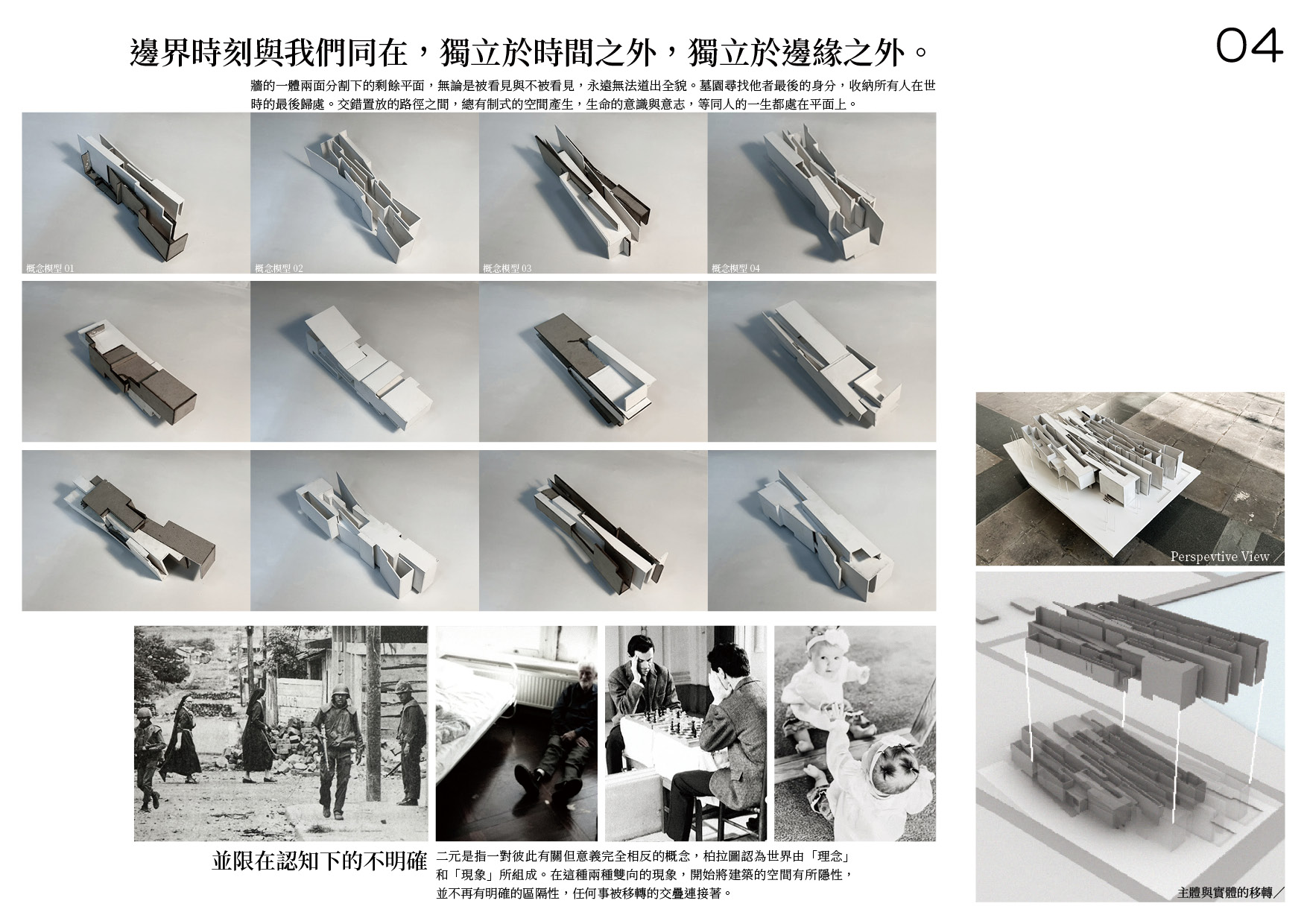
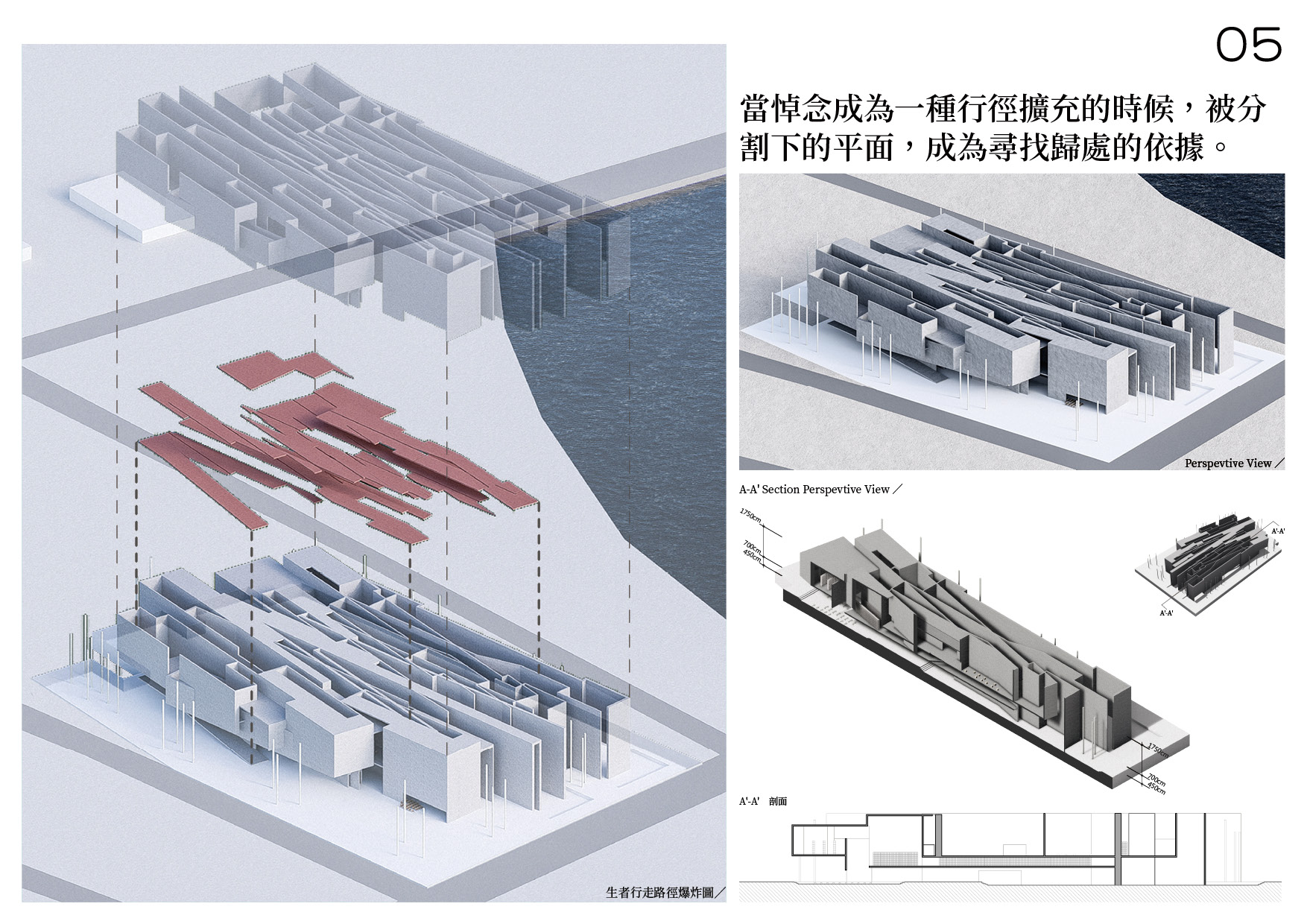
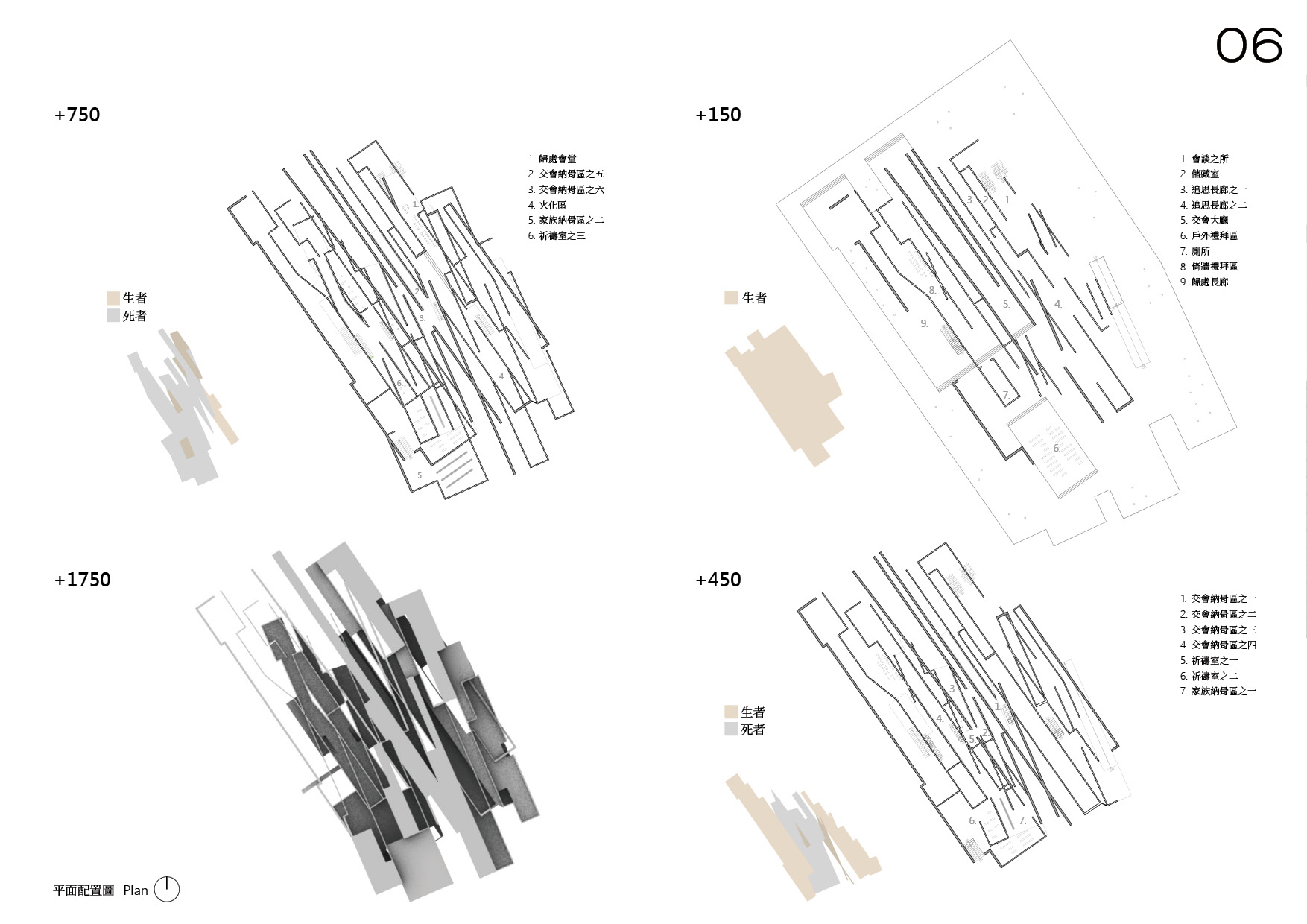
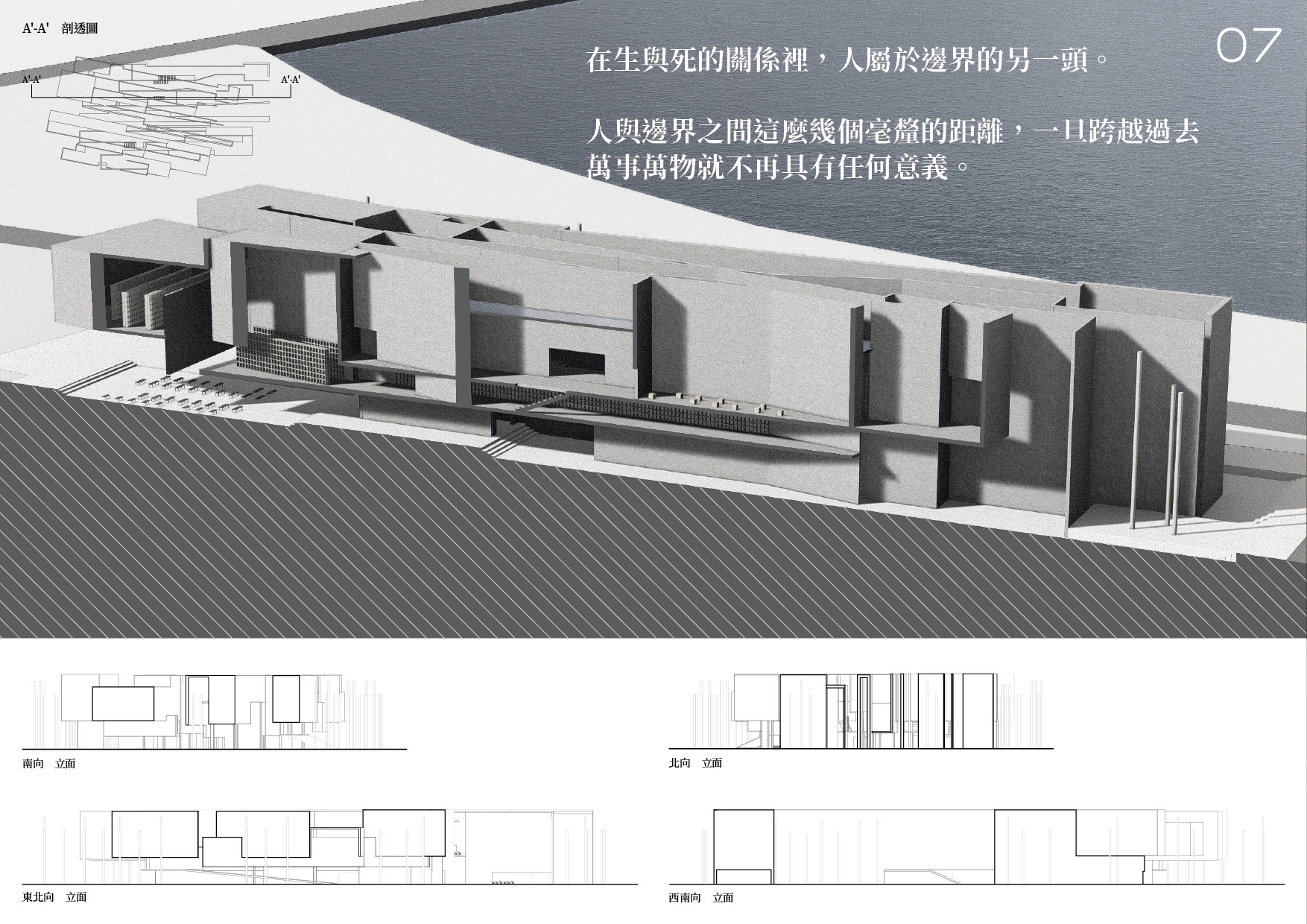
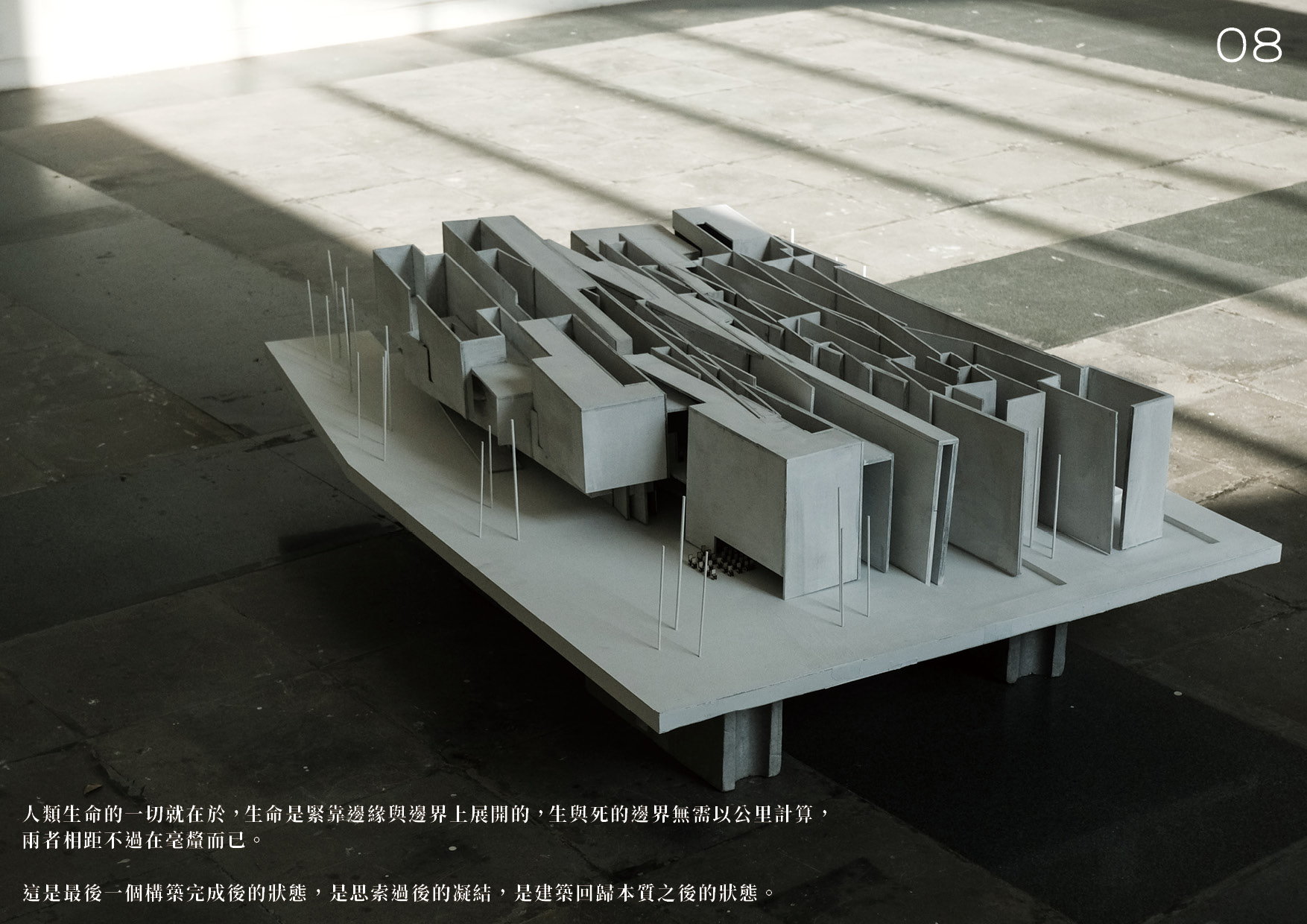
歸處墓園起初對於面的思考,將平面作為垂直水平的劃分,而後透過解構將平面疊合,原本的矩形空間從平行變成交錯的所剩路徑,來到這裡的人,必須走完如儀式般的墓園才能回歸到原有的地表,建築在此改變以往熟悉平面對於樓層的認知,從高度上進行平面概念的轉變,其實人從來不能夠決定真正怎麼樣的活法,成為一個活的顯性、死的隱性。在這裡,墓園成為一個生者跟逝者之間的交匯點。
自然在開發之下成為人為,再成為人為過後的所剩,基地位於臺南漁光島的邊境之處,另一方的端點同為面海的陸地,成為了臨海的靜默之地,基地外型呈現不規則矩形,呼應地表邊緣並且作為道路的盡處。區域歷經在工業化與都會化的高度發展之後,再多的喧鬧也會隨著潮落之後褪去,最後成為乘載著邊境的默語之處。開始與結束並沒有真正的定論,而漁光島是邊境的境處,建築與基地呈現人與自然辯證後的所剩。
人到達墓園的時候都是生者在走動,逐漸朝上的時候成為生者與逝者的的交匯,形成行徑困窄的狀態。最終都要回歸到一個比較歸線的樣貌,也是一種生命的常態,從追思「我」到「我們」之後的歸處。那生者隨著移轉,回到正交的狀態,建構認知下的不明確,是對生命的追思與得去所從。
Cemetery, the ultimate resting place of life.
The cemetery's final resting place begins with the contemplation of the plane, dividing the horizontal and vertical. Through deconstruction, the plane is stacked, transforming the original rectangular space from parallel to intersecting residual paths. Visitors must walk through the cemetery, like a ritual, before returning to the original earth. The architecture here alters the familiar understanding of horizontal planes across floors, shifting the concept of planes through height. Humans can never truly decide how to live, becoming the visible form of life and the hidden form of death. Here, the cemetery becomes the intersection between the living and the deceased.
Under development, nature becomes human-made, and after this transformation, it turns into what remains. The site is located at the border of Tainan's Yuguang Island, with the opposite end facing the sea, becoming a silent coastal place. The site’s irregular rectangular shape echoes the land's edge and marks the end of the road. After industrialization and urbanization, the noise eventually fades with the tide, leaving behind a place that carries the silent language of the border. Beginnings and endings do not have a definitive conclusion, and Yuguang Island remains the boundary, with the architecture and site reflecting the remnants of the dialectic between humanity and nature.
When people arrive at the cemetery, it is always the living who walk. As they ascend, the intersection of the living and the deceased forms a constrained state of movement. In the end, everything returns to a more ordered state, a natural rhythm of life—from reflecting "I" to "we" and the final resting place. The living, as they move, return to a perpendicular state. The ambiguity constructed through understanding reflects life’s remembrance and what it ultimately draws from.